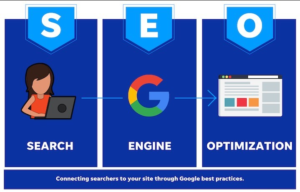A robust online footprint is vital for businesses of all types, and pest control companies are no exception. SEO is a formidable tool that can boost your organic search results and draw in more digital traffic.
Learning about SEO best practices can help you maximize your digital marketing efforts and grow your qualified leads. Click SEO For Pest Control Companies to learn more.

Pest control companies are uniquely positioned to connect with customers who need their services. But, if you want to ensure they find your business at the right time and place, optimizing your website with SEO strategies is important. From keyword research to mobile optimization, these data-backed strategies will help you improve your web visibility and attract more new customers.
On-page optimization involves ensuring that each page of your website aligns with the keywords you’re targeting. This includes optimizing titles, meta descriptions, URLs, image alt text, and other content. The more targeted your pages are, the better your search engine rankings will be. For example, a company that wants to rank for “bed bug inspection cost Raleigh” should use these keywords in title tags and throughout the content.
Identifying target keywords is an essential step in any marketing campaign. But it’s also crucial to know what distinguishes your pest control business from others. For example, what makes you a unique choice for an organic pest solution or 24/7 emergency service? Adding these features to your keyword strategy will help your business stand out in a busy online environment.
Once you’ve identified the most effective keywords, it’s time to put them to work. SEO for pest control companies is an ongoing process, and working on it year-round will ensure that your business remains visible and competitive. When peak season comes around, you’ll be ready to meet the demand and capture your share of the market.
Local SEO
Local SEO is an essential tool for pest control businesses to leverage in order to grow their local client base. It is a process that combines the use of traditional marketing tools, like email blasts and social media, with online marketing tactics to increase brand visibility. It also boosts the credibility of a business and helps search engines understand its services & location better.
The first step in local SEO is to define your business goals and target audience. This will help you choose the right keywords for your campaign. It is important to focus on transactional keywords, which will guide potential clients smoothly towards booking a service or making a purchase.
You can optimize your website using different on-page and off-page SEO techniques to ensure the best performance. On-page optimization includes creating a sitemap, optimizing meta tags, and optimizing image alt text. Off-page SEO includes enhancing your social media presence and securing backlinks from authoritative sites. It is also crucial to monitor your site regularly and address any issues that might occur, such as 404 errors or server disruptions.
Create a Google My Business profile and update your information frequently to boost your local visibility. Make sure to include relevant images & videos and update your contact details. Also, encourage your customers to leave reviews & testimonials.
Forge partnerships with local hardware stores, real estate agencies, and environmental groups to boost your local search engine performance. You can even sponsor local expos or community clean-up days to gain valuable backlinks and establish your brand as a trusted source in the area.
Website speed optimization
Whether you are driving traffic, in-store visits, or phone calls, your website’s speed is critical to converting customers. A slow-loading site will cause users to get frustrated and leave, while a fast-loading website can increase conversions and search engine rankings. As a result, pest control SEO that focuses on optimizing website speed is a must-have for your business.
The key to boosting your website’s load time is to minify your web pages. This involves removing unnecessary code, which reduces the number of HTTP requests that are sent by browsers to your server. You can use free tools like CSSNano or UglifyJS to minimize your page’s request count. Another way to improve your website’s speed is by leveraging a content delivery network (CDN). CDNs cache your content around the world, allowing it to load more quickly for users in different locations.
As you optimize your site for speed, remember to test the performance of each page. Using modern tools, you can easily automate this process and check for issues with your website. For example, you can use BrowserStack SpeedLab to test your website’s performance across different devices.
Other ways to boost your website’s speed include addressing crawl errors and migrating to HTTPS, which provides secure connections for user data. Lastly, you should create a robust Google Business Profile that features accurate information about your pest control company and includes relevant links. You should also consider joining local home fairs and community events to gain visibility and receive backlinks. These tips will help you attract and retain more customers for your pest control company. Alternatively, you can hire an experienced SEO agency that will streamline your marketing efforts.
5-star reviews
Whether you’re a pest control business looking to grow organically or efficiently convert leads from paid search, we have the experience and know-how to make it happen. Our team will conduct a digital competitive analysis to identify gaps in your current SEO strategy and deliver actionable insights for closing them.
Onsite Optimization
Getting found online is all about providing valuable, trustworthy information that’s relevant to the users searching for your services. Our team will help you optimize your site by addressing basic missed opportunities like making sure Google can crawl your website, creating a sitemap, and optimizing page titles and metadata.
Keyword Research
Effective pest control SEO starts with identifying the words and phrases that your target market searches for when they need your services. This allows us to create content that aligns with those user queries and helps you rank higher on SERPs. Keyword research tools can also help you find long-tail keywords with lower competition and higher search volume such as “signs of squirrels in the attic” or “mice removal from a garage.”
Local SEO
Pest control SEO for local businesses ensures that your business is visible in search results when potential customers are looking for services near them. It involves specific strategies that optimize your business’s website, content, and offsite factors like backlinks and reviews. High-quality backlinks from authoritative sources that are relevant to your business are important for ranking, but acquiring them requires time and effort. Using tactics like guest posting on industry sites and contributing expertise to recognized publications expands your visibility while helping you earn quality backlinks over time.
Customer reviews are a significant factor in local SEO, and are one of the few factors that can be controlled by your business. Having an active review management program that encourages your satisfied customers to leave reviews on your Google Business Profile and other social media platforms is key for building trust and ranking higher in search results.
Marketing analytics
Pest control companies rely heavily on online search engines to find new clients. This is especially true when a homeowner searches for “pest control services near me” or similar keywords. When you implement SEO, you can make sure that your website is among the top results. This will help you attract more potential clients and secure more service appointments.
SEO involves optimizing your website and content for better visibility on search engine result pages (SERPs). This includes keyword research, building backlinks, and creating high-quality content. It is also important to track and analyze your website traffic, so you can improve your marketing efforts. For example, you can use a heat map tool to see how users interact with your site. By analyzing the results, you can make changes that will boost your conversion rate.
For pest control businesses, local SEO is an essential tool for attracting leads and boosting revenue. The key to successful local SEO is ensuring that your website’s content is relevant and optimized for the specific types of pests your business deals with. This means using keywords that are related to the specific rodents and insects you deal with in your area. In addition, you should also use location-based keywords to target local searchers.
Another important factor in pest control SEO is establishing credibility and trust in the eyes of your potential customers. Having positive reviews on your Google Business page, website, and social media accounts is crucial to gaining the trust of prospective customers. You can also promote customer testimonials and success stories on your website to build credibility and trust.
While implementing these pest control SEO strategies can be time-consuming, they can have a significant impact on your bottom line. By investing in quality content and utilizing the right SEO techniques, you can ensure that your pest control company will be one of the first that your future customers will see when they do an online search.
